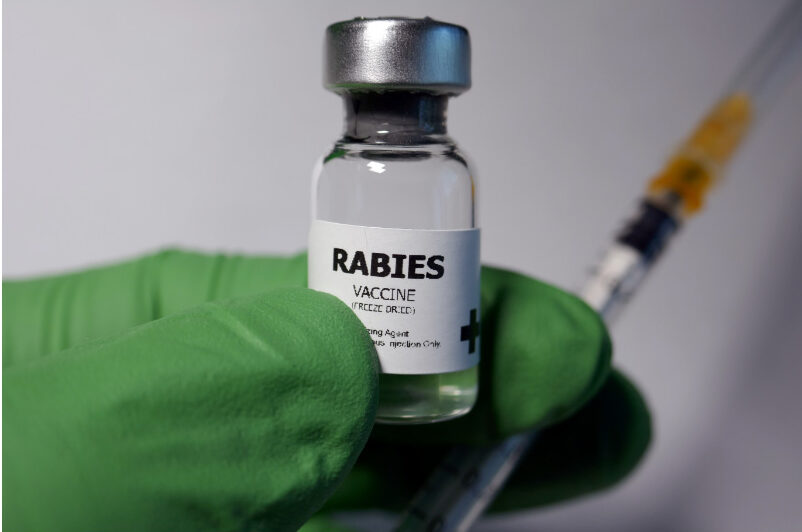Steroids in Pain Relief Medications for Dogs: Key Facts

Key takeaways:
- Steroids can reduce pain and swelling in dogs, but they must be prescribed and monitored by a vet.
- Side effects like increased thirst, ulcers, or weight changes are possible, especially with long-term use.
- Following dosing instructions, scheduling checkups, and watching for side effects helps keep your dog safe and comfortable.
No pet parent likes to think about their dog being in pain, but unfortunately, it’s something that comes with injuries, surgeries, or health conditions like arthritis and joint issues. Left untreated, pain can make daily activities harder for your dog and even slow down healing. Taking charge of pain relief can make a big difference in how quickly your dog bounces back and how happy they feel day to day.
This guide covers what you need to know about safe pain relief options, including how steroids work to reduce swelling and discomfort when other treatments aren’t enough. With PetHealthMD, you’ll have helpful advice at your fingertips so you can work closely with your vet and keep your best friend feeling comfortable and cared for.
Understanding pain in dogs
Pain in dogs can be tricky to spot because they often hide discomfort as a natural instinct. Some dogs will power through pain to avoid appearing weak, which means owners need to stay alert for small changes in behavior or movement.
Catching these signs early can help you and your vet manage pain more effectively and keep your dog feeling their best:
- Limping or favoring one leg: A clear sign that something may be sore or injured.
- Reluctance to move or jump: Hesitation in climbing stairs or getting into the car can mean joint pain.
- Whining or unusual vocalizing: Whimpers or yelps when touched can signal discomfort.
- Changes in appetite: Some dogs eat less when they’re in pain.
- Restlessness or trouble sleeping: Discomfort can make it hard for dogs to settle down and rest properly.
Because so many things can cause pain, from a pulled muscle to arthritis, regular vet visits are key. Pinpointing the cause of pain makes it easier to choose the right treatment plan and medication.
Types of pain medications for dogs
Dogs have different pain relief needs depending on whether they’re recovering from surgery, dealing with a short-term injury, or living with long-term joint issues. Your vet will choose the right medication based on what’s causing the pain and how severe it is.
NSAIDs
Nonsteroidal anti-inflammatory drugs, or NSAIDs, are commonly used for conditions like arthritis or mild injuries. They help lower inflammation and ease pain, making it easier for your dog to move comfortably. Unlike human over-the-counter options, dog NSAIDs must be prescribed by a vet to ensure they’re safe and the dose is just right.
Opioids
For more serious pain, such as after surgery or when managing advanced cancer, vets may prescribe opioids. These strong painkillers work well for severe discomfort but usually come with closer monitoring because they can cause drowsiness or other side effects. Opioids are typically used short-term and under strict guidance.
Steroids
Steroids are powerful anti-inflammatory drugs used when swelling or pain needs to be controlled quickly. They’re not the first choice for routine pain, but can be very helpful in emergencies or when other medications aren’t enough. Because steroids have potential side effects, vets use them carefully and for the shortest time needed to help your dog feel better.
How do steroids work for dogs?
So, how do these powerful medications actually work? Steroids are designed to act like certain hormones that your dog’s body naturally makes, but in higher, more controlled doses. This boost helps reduce swelling, ease inflammation, and calm the immune system when it overreacts.
Here are a few ways steroids make a difference for dogs dealing with pain or serious flare-ups:
- Amplify the body’s natural response: Steroids enhance the effects of hormones already at work to control swelling and pain.
- Rapidly decrease inflammation: They bring quick relief by calming swollen joints, tissues, or allergic reactions.
- Support allergy control: When a dog’s immune system flares up too strongly, steroids can ease itching and discomfort.
- Address pain that other meds can’t: In cases like severe arthritis, certain injuries, or cancer-related swelling, steroids can add extra relief.
- Provide emergency support: Vets often reach for steroids during urgent situations to manage sudden, dangerous swelling or severe allergic reactions.
Steroids can be an effective tool for helping your dog feel better during tough times if used wisely and under your vet’s supervision.
Key facts about steroid use for pain in dogs
Knowing the basics about steroid use for pain in dogs helps you work with your vet to make sure your dog gets the benefits without unnecessary risks. Below are some crucial points to keep in mind about steroids for dogs:
- Prescription required: Medications like prednisone, prednisolone, dexamethasone, and triamcinolone can’t be bought over the counter—your vet will decide which one best fits your dog’s condition.
- Different ways to give them: Depending on your dog’s needs, steroids can be given as pills, injections, or topical creams for skin and eye problems.
- Regular monitoring: Because steroids affect multiple organs, your vet may suggest blood tests or checkups to make sure your dog’s liver and other systems stay healthy during treatment.
- Stick to the plan: Always follow your vet’s dosing instructions closely and never stop steroids suddenly without guidance—tapering down is often necessary to prevent health problems.
When in doubt, ask your vet questions so you feel confident about how and when to use steroids safely.
Risks and side effects of steroids
While steroids can quickly relieve your pet’s pain, they also have some possible downsides. Being aware of side effects helps you watch for early signs of trouble and keep your dog comfortable throughout treatment.
Stomach ulcers
One common risk with steroid use is irritation of the stomach lining, which can lead to painful ulcers. Dogs may show signs like vomiting, a poor appetite, or dark, tarry stools. If you spot these symptoms, let your vet know immediately.
Increased thirst and appetite
Many dogs on steroids feel hungrier and thirstier than usual. This means you might notice them drinking more water and needing extra potty breaks. Keeping fresh water available and monitoring bathroom trips can help prevent accidents and dehydration.
Fluid retention
Steroids can sometimes cause your dog’s body to hold onto extra fluid. This can make them look a bit puffy or cause mild swelling, especially in the belly or legs. If swelling seems excessive, check in with your vet.
Long-term concerns
Using steroids for an extended time can weaken bones (osteoporosis), thin the skin, or lead to patchy hair loss. These effects are more likely when high doses are given for weeks or months. Vets usually balance benefits and risks by using the smallest effective dose for the shortest time possible.
Risks during pregnancy
If your dog is pregnant, steroids can pose serious risks to unborn puppies, including miscarriage or birth defects. Always tell your vet if your dog might be expecting before starting steroid treatment.
Tips to make steroid use safer

Steroids can be a valuable tool for managing your dog’s pain and inflammation, but a few smart steps can help avoid unwanted side effects. Following your vet’s instructions closely and adding a few supportive habits at home can make a big difference. Here’s how to keep steroid use as safe as possible:
- Use the lowest effective dose: Always aim for the smallest amount of steroid that controls your dog’s symptoms, and only for as long as truly needed.
- Add omega-3 supplements: Products like Super Pure Omega 3 or Nordic Naturals Omega-3 Pet can naturally help reduce inflammation, which might allow for a lower steroid dose.
- Start treatment early: If your vet recommends steroids, beginning treatment before the problem becomes severe can mean shorter treatment times and better results.
- Keep fresh water available: Steroids can increase thirst, so make sure your dog always has clean water and extra potty breaks to avoid accidents.
- Monitor weight and appetite: Weigh your dog regularly and pay attention to changes in how much they’re eating. Share any significant changes with your vet so they can adjust the plan if needed.
- Check stools for problems: Watch for black, tarry stools, which can signal a stomach ulcer. If you see this, stop the medication and call your vet right away.
- Schedule regular tests: Blood and urine checks help ensure your dog’s liver and other organs stay healthy during steroid treatment.
- Never medicate on your own: Only give steroids when prescribed and directed by your veterinarian—self-medicating can cause serious harm.
Taking these steps helps you get the benefits of steroids while protecting your dog’s overall health.
When to talk to your vet
Never give your dog steroids or any human pain medication without checking with your vet first, as this can do more harm than good. If your dog seems to be getting worse, shows new side effects, or if you’re worried the current dose isn’t working, reach out to your vet right away. They can help adjust the treatment plan, suggest alternative options, or run tests to make sure your dog stays as safe and comfortable as possible.
Frequently asked questions (FAQs)
Pet parents often have extra questions about pain relief medications for dogs and how steroids fit in. Below are clear answers to help you feel confident about your dog’s treatment and safety.
How long can a dog stay on steroids safely?
Most dogs should only take steroids for the shortest time possible to avoid long-term side effects. Some dogs with chronic conditions may need low doses for longer, but only under close vet supervision. Your vet will monitor your dog’s health with checkups and tests to keep treatment safe.
Can I give my dog human painkillers like ibuprofen or aspirin?
No. Human painkillers like ibuprofen, aspirin, or acetaminophen can be very dangerous for dogs and may cause stomach ulcers, kidney problems, or worse. Always talk to your vet before giving any medication. There are safe alternatives designed just for pets.
Are there natural alternatives to help with my dog’s pain?
Some dogs benefit from natural options like omega-3, joint chews, or special diets that support healthy joints and reduce inflammation. These can sometimes help lower the need for stronger medications. Always ask your vet before adding new supplements to your dog’s routine.
What signs should I watch for if my dog is having a bad reaction to pain medication?
Watch for vomiting, black or tarry stools, sudden changes in appetite or behavior, or signs your dog seems more uncomfortable instead of better. Swelling or trouble breathing needs urgent vet care. If anything feels off, call your vet as soon as possible.
Is it safe to stop giving my dog steroids suddenly?
No, suddenly stopping steroids can cause serious health problems because your dog’s body needs time to adjust. Vets usually create a tapering plan to lower the dose gradually. Always follow your vet’s instructions when stopping or changing steroid use.
Comfort and care for your dog’s pain
Pain relief is an important part of keeping your dog active, happy, and comfortable at every stage of life. Medications like NSAIDs, opioids, and steroids each have a role, but using them safely means staying informed and working closely with your vet.
At PetHealthMD, we’re here to help you understand treatment options and make wise choices for your dog’s health. With the right plan and regular check-ins, you can help your best friend feel their best every day.





